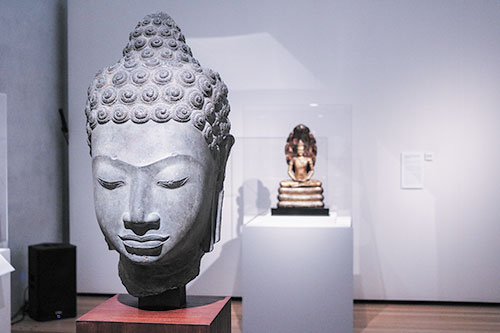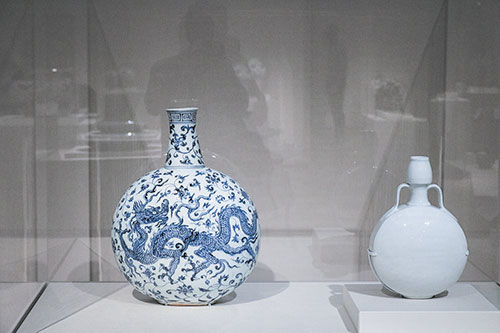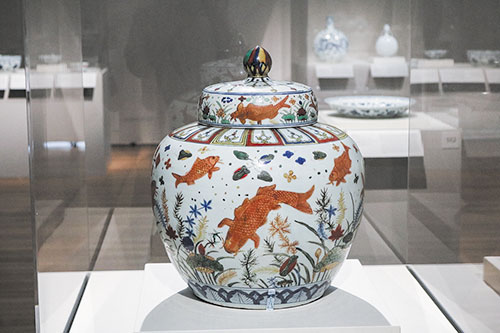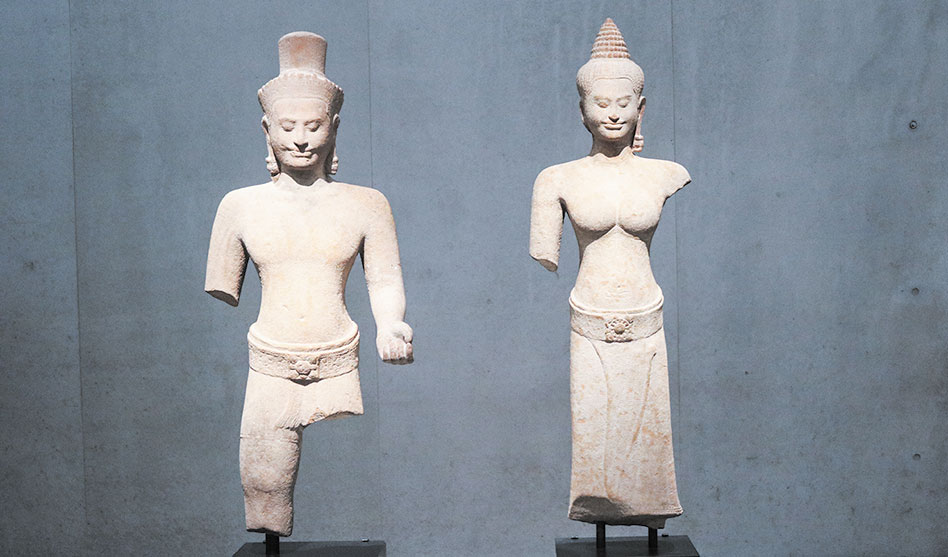2,500 years of history, culture, religion all wrapped up into one incredible exhibit
DAVID TAFFET | Senior Staff Writer
taffet@dallasvoice.com
That the Kimbell Art Museum has a world class exhibit goes without saying. Go expecting the best, and then they’ll blow you away with something even better than expected.
So it is with Buddha, Shiva, Lotus, Dragon.
Jennifer Casier Price, the Kimbell’s curator of Asian, African and Ancient American art, called the current exhibit “textbook works of art.” Then she explained: When you’re looking through a textbook for the finest examples of Chinese porcelain, the earliest, most detailed images of Buddha or the best examples of chola bronze sculptures, these pieces on exhibit are the ones you’ll find.
 The exhibit of 67 pieces comes from the Mr. and Mrs. John D. Rockefeller 3rd Collection at the Asia Society in New York.
The exhibit of 67 pieces comes from the Mr. and Mrs. John D. Rockefeller 3rd Collection at the Asia Society in New York.
After World World II, the Rockefellers began collecting Asian art. Their goal was to bring Asian culture to the U.S. to bridge a cultural gap.
During that period, there was lingering animosity against Japan and, during the early 1950s, against Korea. That makes the timing for this exhibit perfect for a time when we’re experiencing a high rate of anti-Asian hate crimes.
The Rockefellers’ philosophy of collecting was to acquire only the finest items rather than amassing a vast collection, a style that mirrors how the Kimbell’s own collection has grown.
Their collection grew to 300 pieces by the time John D. Rockefeller died in a car accident in 1978. That’s when Mrs. Rockefeller left the collection to the Asia Society, and this exhibit is the first U.S. tour of part of the collection in more than 20 years.
The exhibit as displayed at the Kimbell is divided into three sections (Other museums on the tour will be displaying them differently):
The first hall is filled with statues of different incarnations of Buddha that show how Buddhism spread through Asia and acquired local features.
 The earliest sculpture of Buddha is from 2nd century Pakistan. By the time the religion reached the Himalayas centuries later, the beliefs were accepted, but the Buddha was created from metals rather than stone, and the facial features resembled the people of Nepal and Tibet.
The earliest sculpture of Buddha is from 2nd century Pakistan. By the time the religion reached the Himalayas centuries later, the beliefs were accepted, but the Buddha was created from metals rather than stone, and the facial features resembled the people of Nepal and Tibet.
While Buddhism began in India, the 12th century Muslim invasion drove Buddhism east where it was adopted in Burma, Cambodia, Thailand and other southeast Asian countries. as well as China and Japan.
The second hall features porcelain and pottery. Without trade along the Silk Road, Chinese potters would never have crafted the amazing works on display. Ming pottery, known for its rich cobalt blue imagery, relied on cobalt that came from Persia — roughly Iran, Iraq and Syria. And the fine white on which it’s painted came from a clay discovered in China. But other craftsmen discovered just how to build the kiln and heat it to the right temperature to create these treasures.
 Examples of pottery, figurines and more from Japan, Korea and Vietnam display the differences in craftsmanship between cultures.
Examples of pottery, figurines and more from Japan, Korea and Vietnam display the differences in craftsmanship between cultures.
The development of pottery can be traced by the addition of colors. First red was added. One large example has a faded red pattern that shows this piece was from a period where artists were learning to control the temperature at which the pot was baked. A later piece has a much deeper red.
And a later eight-color pot includes goldfish painted in bright orange.
The Qing Dynasty, the final Chinese dynasty, brought the last development in porcelain with the import of pastel colors from Europe.
Finally is a hall of Hindu gods in stone and bronze. To mold the bronze sculptures, wax and ceramic forms were created. The bronze was poured into the mold, which melted the wax, but the ceramic had to be broken to remove the bronze sculpture. So each of the pieces created were one-of-a-kind because they literally broke the mold for each one as it was completed.
 In its arrangement of artifacts, the Kimbell does leave the best for last with Shiva as Lord of the Dance, an 11th century bronze illustrating Shiva’s role in Hinduism as creator, preserver and destroyer of the universe.
In its arrangement of artifacts, the Kimbell does leave the best for last with Shiva as Lord of the Dance, an 11th century bronze illustrating Shiva’s role in Hinduism as creator, preserver and destroyer of the universe.
Buddha, Shiva, Lotus, Dragon will be at the Kimbell Art Museum, 3333 Camp Bowie Blvd., Fort Worth from June 27-Sept. 5. $18.




